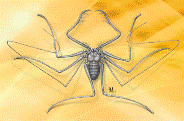Papers in the Biological Sciences
Document Type
Article
Date of this Version
2012
Citation
Current Zoology 58 (3): 426−439, 2012. doi 10.1093/czoolo/58.3.426
Abstract
Whereas a rich literature exists for estimating population genetic divergence, metrics of phenotypic trait divergence are lacking, particularly for comparing multiple traits among three or more populations. Here, we review and analyze via simulation Hedges’ g, a widely used parametric estimate of effect size. Our analyses indicate that g is sensitive to a combination of unequal trait variances and unequal sample sizes among populations and to changes in the scale of measurement. We then go on to derive and explain a new, non-parametric distance measure, “Δp”, which is calculated based upon a joint cumulative distribution function (CDF) from all populations under study. More precisely, distances are measured in terms of the percentiles in this CDF at which each population’s median lies. Δp combines many desirable features of other distance metrics into a single metric; namely, compared to other metrics, p is relatively insensitive to unequal variances and sample sizes among the populations sampled. Furthermore, a key feature of Δp—and our main motivation for developing it—is that it easily accommodates simultaneous comparisons of any number of traits across any number of populations. To exemplify its utility, we employ Δp to address a question related to the role of sexual selection in speciation: are sexual signals more divergent than ecological traits in closely related taxa? Using traits of known function in closely related populations, we show that traits predictive of reproductive performance are, indeed, more divergent and more sexually dimorphic than traits related to ecological adaptation.
Included in
Genetics and Genomics Commons, Other Ecology and Evolutionary Biology Commons, Population Biology Commons


Comments
© 2012 Current Zoology. Used by permission.